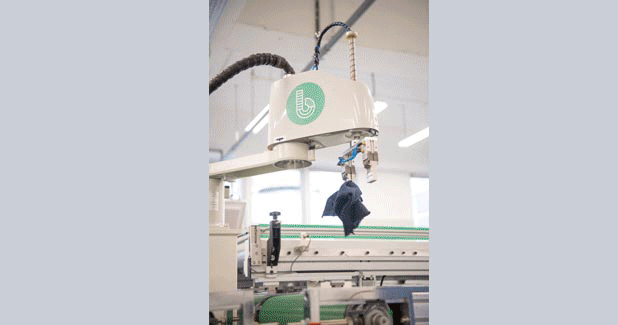
Billie System: Solution to the textile waste problem
Ronna Chao, Chairman of Novetex Textiles, CEO of Novel Investment Partners Limited, and a Director of Novelpark Investments, speaks on Billie System and its features.Excerpts…
Ronna Chao, Chairman of Novetex Textiles, CEO of Novel Investment Partners Limited, and a Director of Novelpark Investments, speaks on Billie System and its features. Excerpts…
Novetex Textiles is a family-run business that has been passed through several generations. How has the company changed over the years?
Since 1976, Novetex has positioned itself as a leader and pioneer in the textile industry. Historically, the yarn spinning business is known to be very traditional, but our mandate is to anticipate what’s coming next and provide innovative and efficient solutions. This philosophy is very much reflected in our parent company’s name, which means “Forever Newâ€. The reality is if you stay in the same place, even if you are at the front, someone will overtake you. We make sure we are always a step ahead. We endeavour to be proactive and try to anticipate the market and our clients’ needs. This is the reason we have survived and continue to flourish.
What was your vision for the company when you joined in 2010?
Over time, each generation has implemented groundbreaking initiatives, beginning with my grandfather and father who made yarns from silk noil (waste from the silk spinning processes), to my late brother Ron, who modernised our business practices while investing heavily in R&D. A large part of his mission included a broader focus on sustainability, which meant investigating our supply chain and our environmental impact. He forged a very clear path which I am determined to continue.
Sustainability is hot topic in the garment industry. How are you adding something new to the conversation?
Over the past decade, we have identified new ways to lessen our environmental impact, from taking steps to integrate our supply chain and sourcing from ethical raw material suppliers. We strive to operate in a socially responsible and environmentally sound manner across our products, manufacturing processes, and company culture. We are still on this journey to setting high standards in the industry.
More recently, we have decided to target the problem of textile waste and the issue of excess inventory. While the concept of upcycling isn’t exactly new, some methods used to create recycled yarns or fibres use considerable volumes of water and chemicals to sanitise and decolourise fabrics. New innovations are vital because of the increasing costs and environmental concerns that come with producing conventional fibres.
We want to support a circular economy for textiles that is more efficient, ethical, and environment friendly. We found a way to do so in the form of the Billie System.
Where did the name come from?
It’s a homage to my grandfather Kuang Piu Chao who was nicknamed “Billy†by many of his Western friends (it’s likely that “Piu†was anglicised into “Billyâ€). I thought it would be a nice touch to end it with an “ieâ€.
Why is the system a game-changer?
The Billie System is a mechanical recycling system that does not consume water, emit wastewater, or produce chemical waste. The only chemical used in the process, ozone, is produced onsite by pressurising oxygen in a compressor tank. Once the ozone has sanitised incoming textile waste, it is decomposed and released back into the atmosphere as oxygen. Apart from the manual removal of rigid parts, the entire system is automated. By doing this, we can reduce the level of manual labour required, thus increasing productivity. One of its other advantages is that once the recycled fibres are ready in the form of slivers, we can send them to our Zhuhai facilities to be spun into yarn. The close proximity of Zhuhai from Hong Kong allows us to reduce the carbon footprint of having to transport recycled fibres to faraway locations to be respun.
One of the downsides of mechanical recycling is that fibres are shortened and damaged during the shredding process. As a result, in order to guarantee the best quality yarn for garment production, we incorporate virgin fibres with our recycled fibres in our Zhuhai facilities.
How does it work?
Before the textile waste is sorted, it passes through an ozone sanitisation system to ensure the level of hygiene. Once zippers, buttons, and other rigid parts are removed by hand, the garments are cut into smaller pieces. The textiles are then automatically sorted into different colours. From here onwards, the system takes 60 minutes to produce slivers. The fabrics pass through our mechanical recycling process and are broken down into fibres. During mechanical recycling, the fibres go through two stages of UV light sanitisation before being formed into slivers. The Billie System has three production lines, each processing up to one tonne a day.
What are your long-term plans for this new technology?
Our main upcycling factory is located in Tai Po, and we are constantly working on improving our efficiency and technology, as well as striving to make a more meaningful impact on creating a circular economy in the textile industry.
The Billie system provides a solution to only one part of the much larger textile waste problem. We see this as the beginning of many initiatives and innovative concepts that are set to change industry standards for the better.




